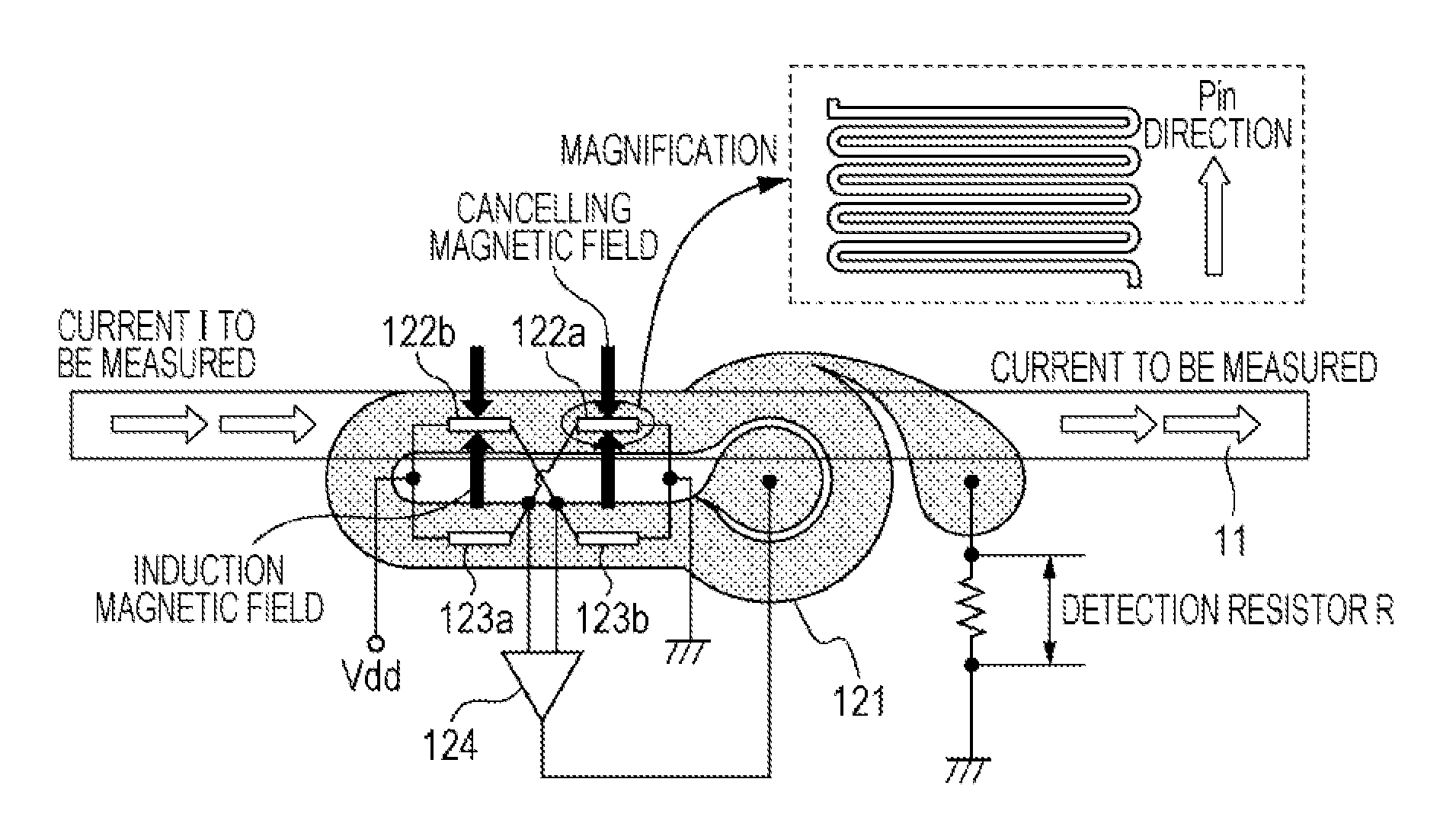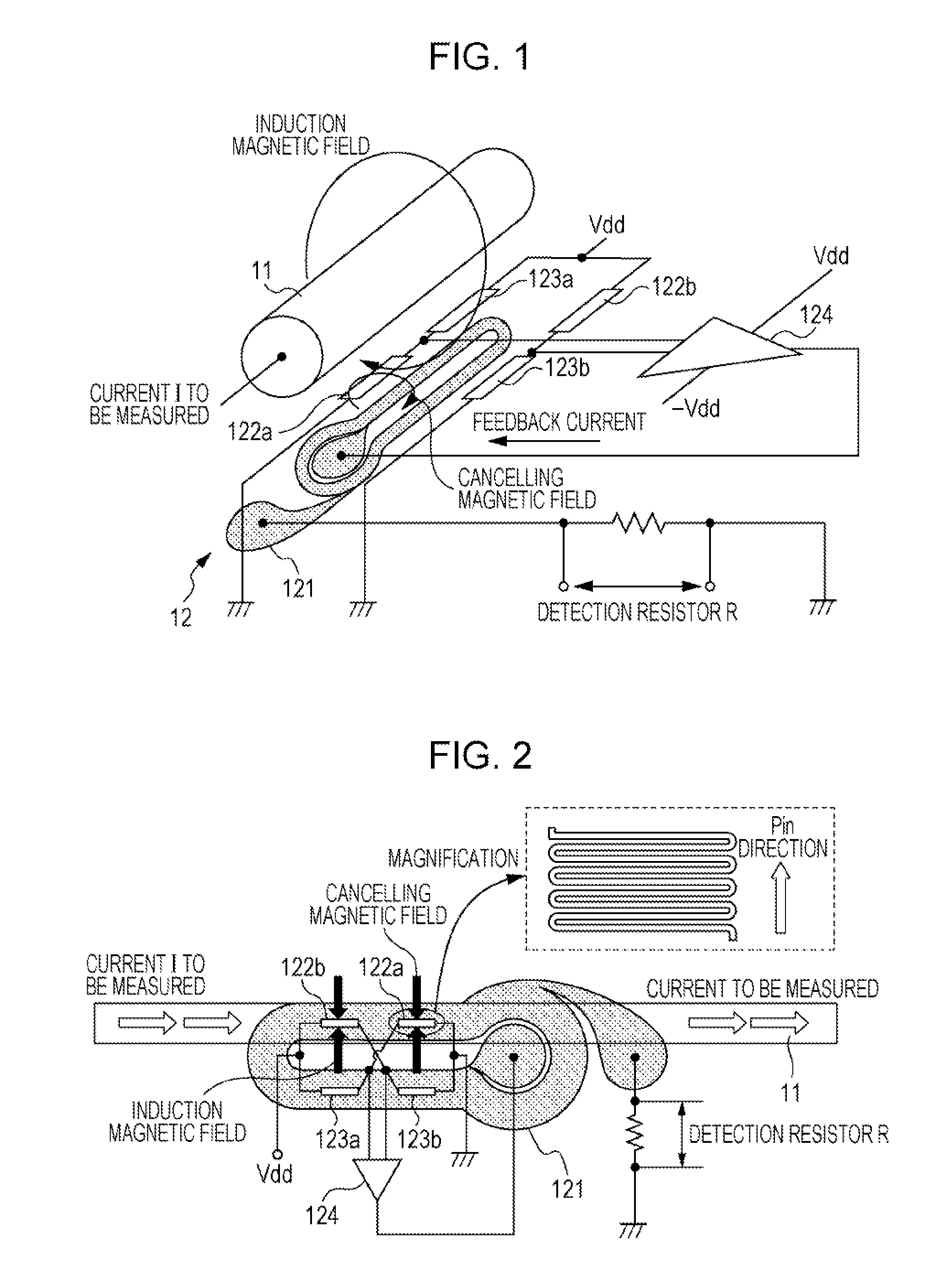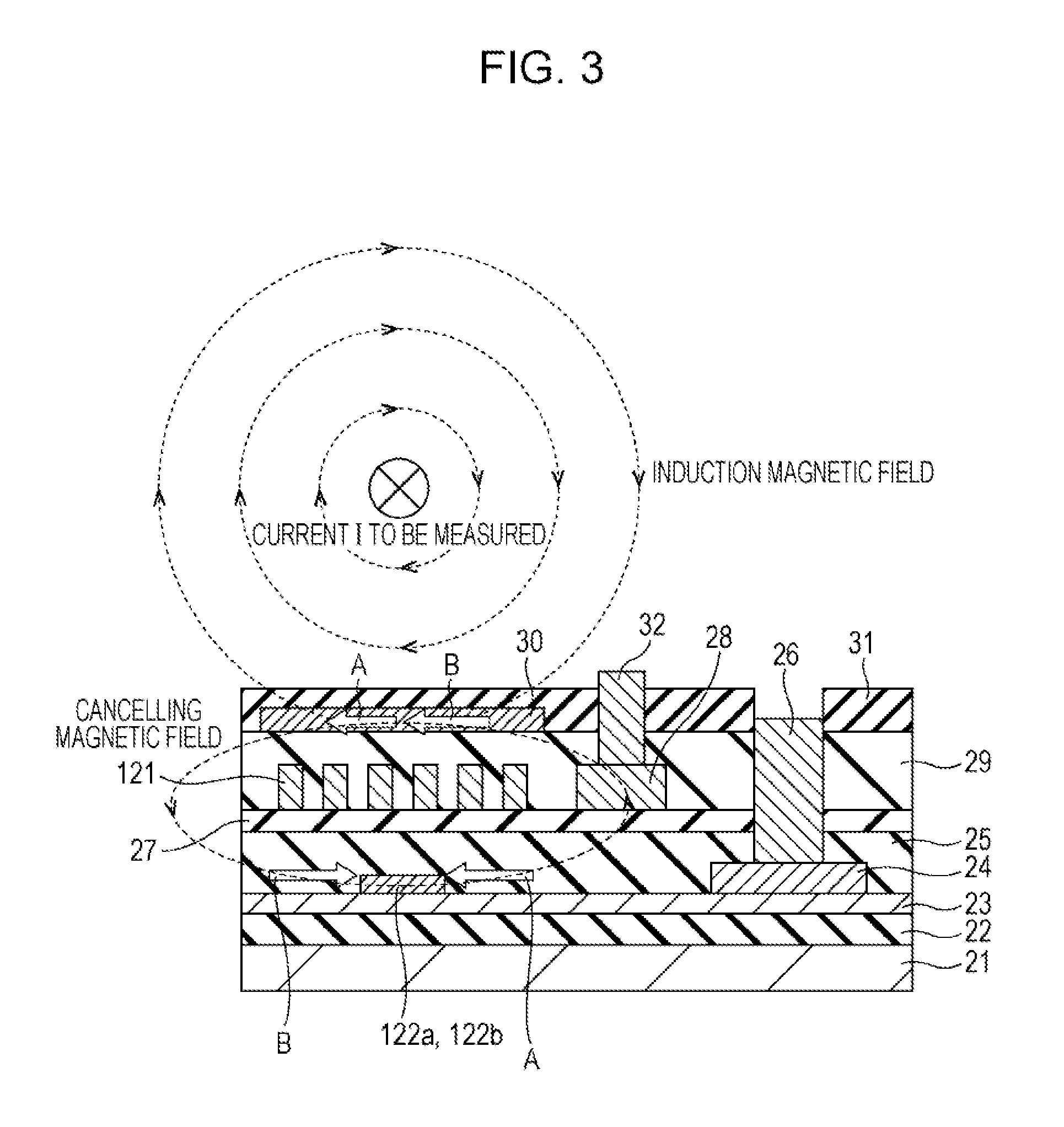Magnetic balance type current sensor
- Summary
- Abstract
- Description
- Claims
- Application Information
AI Technical Summary
Benefits of technology
Problems solved by technology
Method used
Image
Examples
first embodiment
[0046]FIG. 1 and FIG. 2 are diagrams illustrating a magnetic balance type current sensor according to a first embodiment of the present invention. In the present embodiment, the magnetic balance type current sensor illustrated in FIG. 1 and FIG. 2 is arranged in the vicinity of a conductor 11 through which a current I to be measured flows. The magnetic balance type current sensor includes a feedback circuit 12 causing a magnetic field (cancelling magnetic field) to occur, the magnetic field cancelling out an induction magnetic field due to the current I to be measured flowing through the conductor 11. The feedback circuit 12 includes a feedback coil 121 wound in a direction cancelling out the magnetic field occurring owing to the current I to be measured, two magnetoresistance effect elements 122a and 122b that are magnetic detecting elements, and two fixed resistance elements 123a and 123b.
[0047]The feedback coil 121 is configured using a planar coil. In this configuration, since ...
second embodiment
[0084]In the present embodiment, the case of a magnetic balance type current sensor will be described that includes a function in which a hysteresis is corrected when an output is measured in a state in which no current measurement is performed and the output is different from a reference output.
[0085]In the magnetic balance type current sensor, when a current to be measured exceeding the measurement range of a sensor flows, it is difficult to achieve a magnetic equilibrium. In particular, in a case in which the magnetic detecting element is a magnetoresistance effect element, since, as illustrated in FIG. 14A, the element has a hysteresis characteristic, when the current to be measured is large, the magnetoresistance effect element is saturated and a zero point deviates owing to the hysteresis of the element. As a result, as illustrated in FIG. 14B, the characteristic curve of an output with respect to an input current deviates to a + side or a − side, and it may be considered that...
third embodiment
[0091]In the present embodiment, a magnetic balance type current sensor will be described that includes a function in which the self-test of the magnetoresistance effect element is performed by passing a current through a calibration coil in a state in which no input of a current exists.
[0092]When the induction magnetic field occurring from the current to be measured is measured using a magnetic balance type sensor, it is likely that the magnetoresistance effect element is influenced by an external magnetic field owing to another element or a wiring line in addition to the conductor through which the current to be measured flows. In addition, when high reliability is necessary as in automobiles, it may be likely that a serious accident is invited if the output of the magnetoresistance effect element with respect to the input current changes owing to some factor.
[0093]FIG. 18 is a diagram illustrating part of the magnetic balance type current sensor according to the present embodimen...
PUM
 Login to View More
Login to View More Abstract
Description
Claims
Application Information
 Login to View More
Login to View More - R&D
- Intellectual Property
- Life Sciences
- Materials
- Tech Scout
- Unparalleled Data Quality
- Higher Quality Content
- 60% Fewer Hallucinations
Browse by: Latest US Patents, China's latest patents, Technical Efficacy Thesaurus, Application Domain, Technology Topic, Popular Technical Reports.
© 2025 PatSnap. All rights reserved.Legal|Privacy policy|Modern Slavery Act Transparency Statement|Sitemap|About US| Contact US: help@patsnap.com



